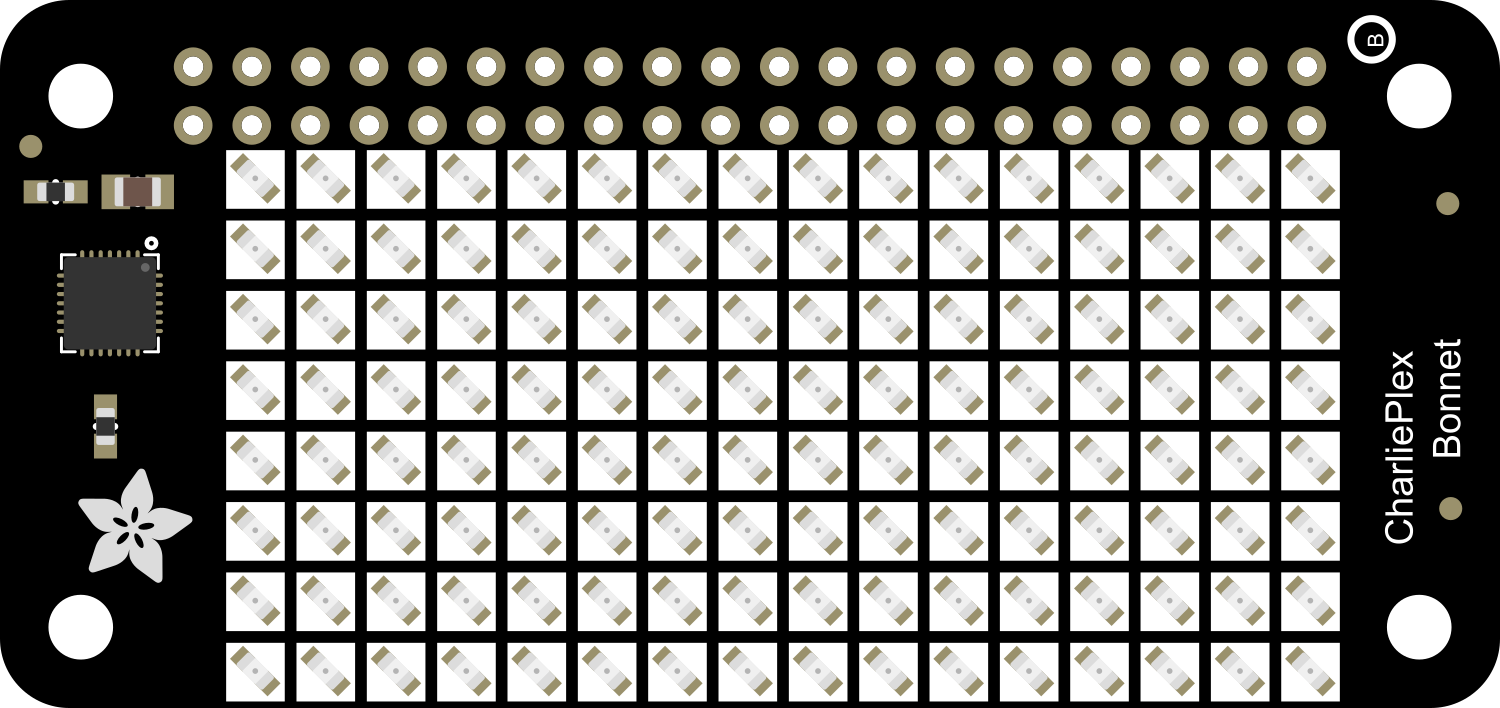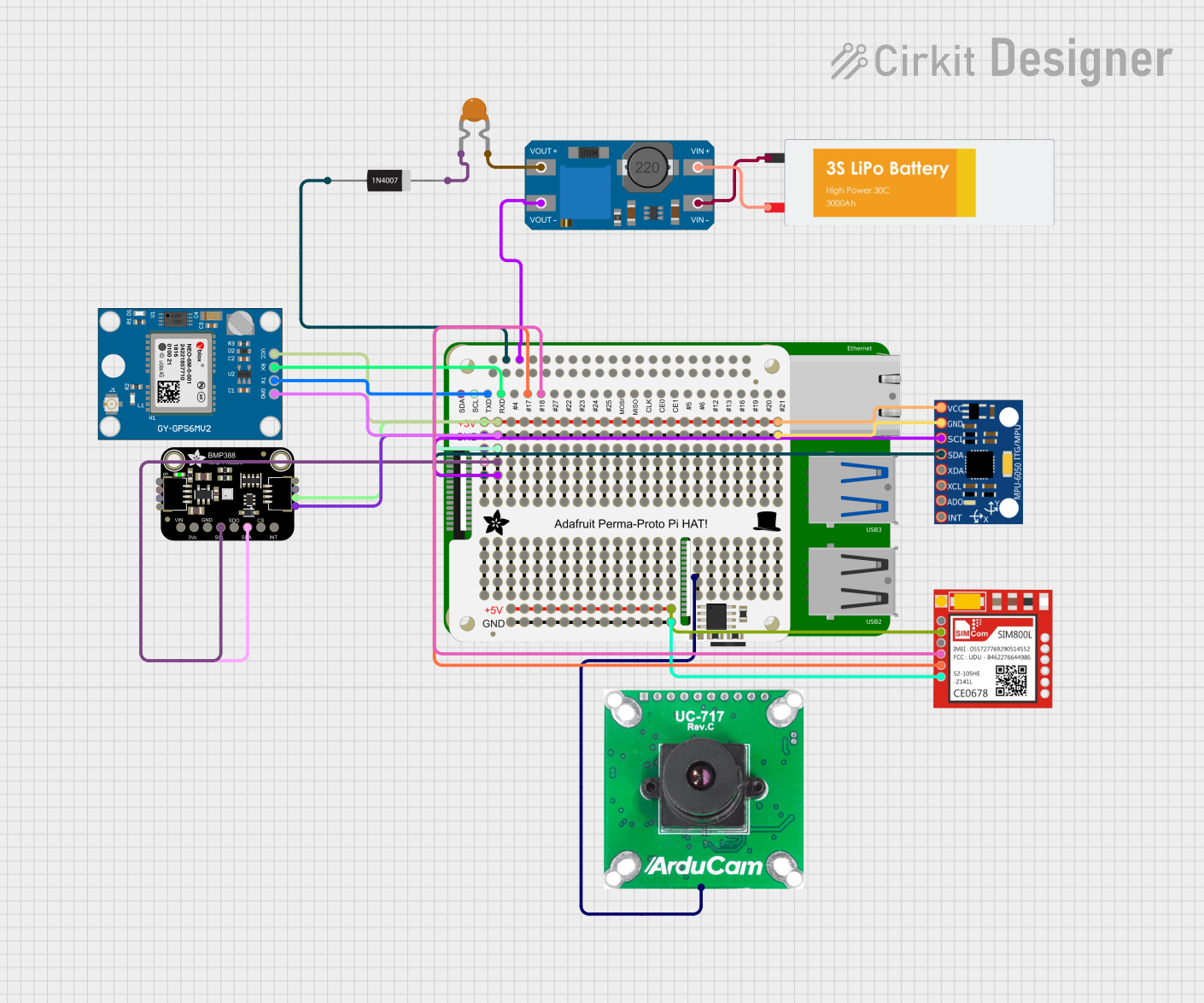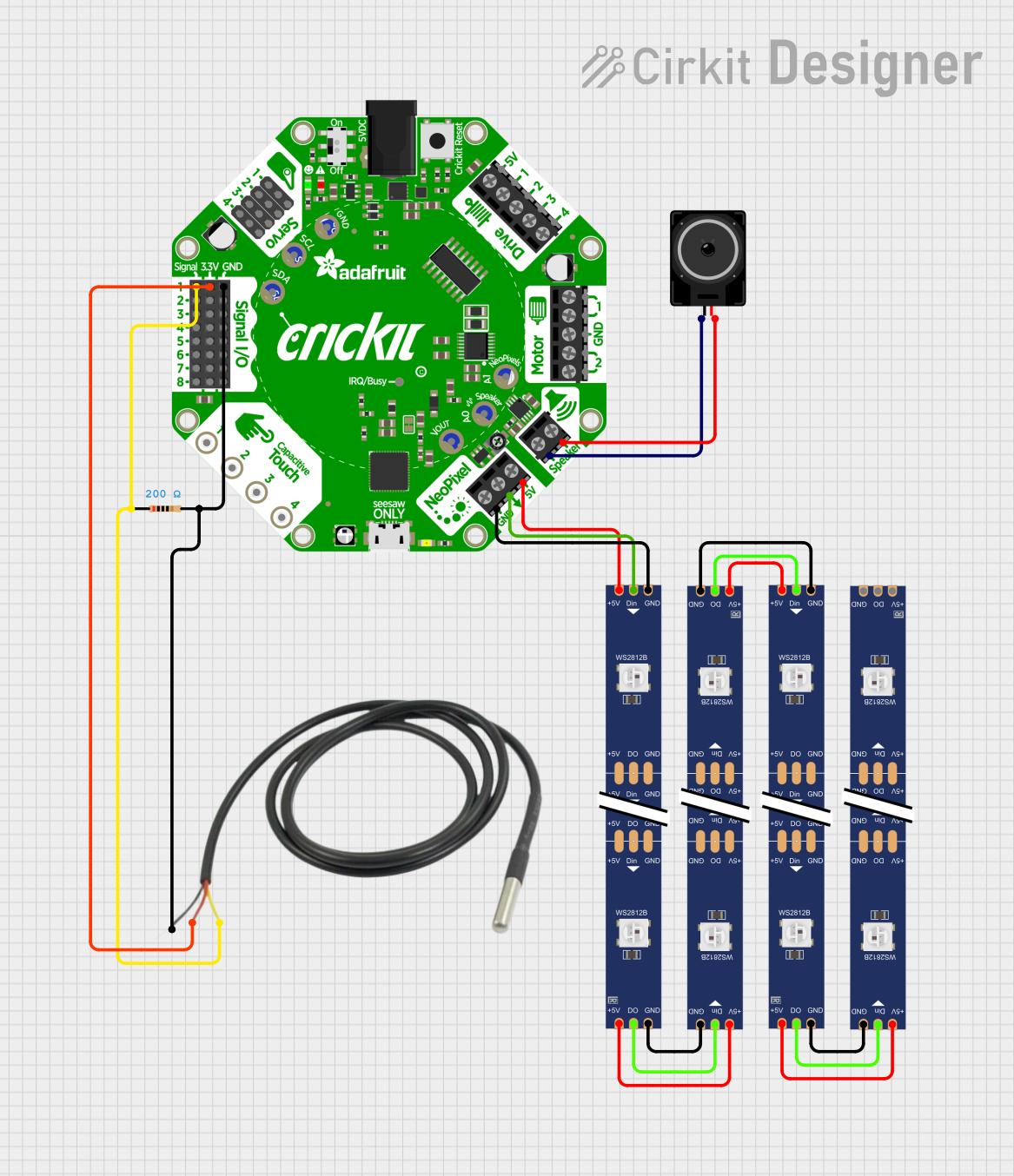
How to Use Adafruit CharliePlex Bonnet: Examples, Pinouts, and Specs

 Design with Adafruit CharliePlex Bonnet in Cirkit Designer
Design with Adafruit CharliePlex Bonnet in Cirkit DesignerIntroduction
The Adafruit CharliePlex Bonnet is an innovative add-on board designed for the Raspberry Pi. It utilizes the Charlieplexing technique to control a multitude of LEDs with a minimal number of General Purpose Input/Output (GPIO) pins. This bonnet is perfect for creating LED matrices, light-up projects, and custom lighting effects without the need for complex wiring or additional components.
Explore Projects Built with Adafruit CharliePlex Bonnet

 Open Project in Cirkit Designer
Open Project in Cirkit Designer
 Open Project in Cirkit Designer
Open Project in Cirkit Designer
 Open Project in Cirkit Designer
Open Project in Cirkit Designer
 Open Project in Cirkit Designer
Open Project in Cirkit DesignerExplore Projects Built with Adafruit CharliePlex Bonnet

 Open Project in Cirkit Designer
Open Project in Cirkit Designer
 Open Project in Cirkit Designer
Open Project in Cirkit Designer
 Open Project in Cirkit Designer
Open Project in Cirkit Designer
 Open Project in Cirkit Designer
Open Project in Cirkit DesignerCommon Applications and Use Cases
- LED matrix displays for animations or scrolling text
- Interactive art installations
- Custom lighting projects
- Educational purposes for learning about Charlieplexing and GPIO control
- Prototyping for larger LED control systems
Technical Specifications
Key Technical Details
- Operating Voltage: 3.3V (from Raspberry Pi)
- Maximum Current per LED: 20mA
- Total Number of Controllable LEDs: 128 (8x16 matrix)
- Communication Interface: GPIO pin control
Pin Configuration and Descriptions
| Pin Number | Description | Notes |
|---|---|---|
| 1 | 3.3V Power Supply | Power from Raspberry Pi |
| 2 | Ground | Ground connection |
| 3-10 | GPIO Pins for LED Control | Used for Charlieplexing signals |
| 11-40 | Not connected/Reserved | Reserved for future use |
Usage Instructions
How to Use the Component in a Circuit
- Attach the Bonnet: Carefully align the bonnet's GPIO connector with the Raspberry Pi's GPIO header and press down to connect.
- Install the Library: Install the Adafruit CharliePlex Bonnet library using the following command:
sudo pip3 install adafruit-circuitpython-is31fl3731 - Connect the LEDs: Insert LEDs into the provided slots on the bonnet, ensuring correct orientation with the anode and cathode.
- Run the Example Code: Test the setup by running the example code provided with the library.
Important Considerations and Best Practices
- Ensure the Raspberry Pi is powered off when attaching the bonnet to prevent any electrical damage.
- Double-check LED polarity before inserting them into the bonnet.
- Avoid exceeding the maximum current rating for each LED to prevent damage.
- Use a proper external power supply if you plan to drive a large number of LEDs at high brightness levels.
Example Code for Raspberry Pi
import board
import busio
from adafruit_is31fl3731 import CharlieWing
Initialize the I2C bus
i2c = busio.I2C(board.SCL, board.SDA)
Initialize the CharlieWing LED matrix
matrix = CharlieWing(i2c)
Clear the matrix
matrix.fill(0)
Light up each LED in sequence
for x in range(16): for y in range(8): matrix[x, y] = 50 # Set brightness to 50 out of 255 time.sleep(0.05) matrix[x, y] = 0 # Turn off LED after a short delay
Troubleshooting and FAQs
Common Issues Users Might Face
- LEDs Not Lighting Up: Ensure the LEDs are inserted correctly with the proper orientation. Check the GPIO connections and ensure the Raspberry Pi is powered on.
- Dim LEDs: If the LEDs are too dim, check the brightness level in your code. Ensure you are not exceeding the power supply capabilities.
- Inconsistent LED Behavior: This could be due to incorrect code or timing issues. Review your script for any errors and ensure the library is up to date.
Solutions and Tips for Troubleshooting
- Recheck Wiring: Verify that all connections are secure and correct.
- Review Code: Look for any errors in your script that could be causing the issue.
- Update Library: Ensure you have the latest version of the Adafruit CharliePlex Bonnet library installed.
- Power Supply: If using a large number of LEDs, ensure your power supply can handle the load.
FAQs
Q: How many LEDs can the CharliePlex Bonnet control? A: The bonnet can control up to 128 LEDs in an 8x16 matrix configuration.
Q: Can I use the CharliePlex Bonnet with other Raspberry Pi models? A: Yes, the bonnet is compatible with any Raspberry Pi model that has a 40-pin GPIO header.
Q: Do I need to use resistors with the LEDs? A: No, the CharliePlex Bonnet has built-in resistors for current limiting.
Q: Can I control individual LED brightness? A: Yes, you can control the brightness of each LED using PWM through the provided library.
For further assistance, refer to the Adafruit CharliePlex Bonnet forums and community resources.